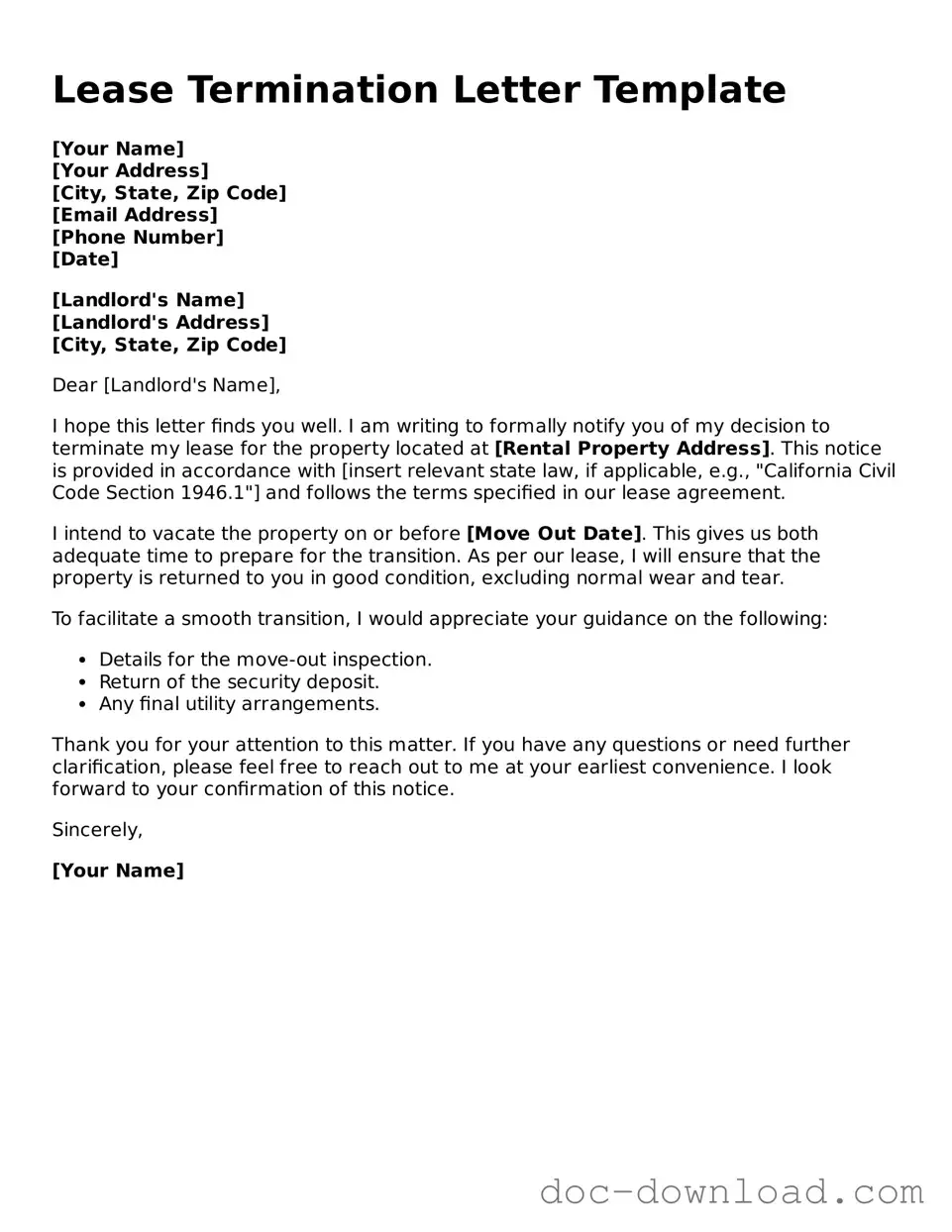The Lease Termination Letter is similar to a Notice to Vacate. Both documents serve as formal notifications from a tenant to a landlord, indicating the tenant's intention to leave the rental property. A Notice to Vacate typically outlines the date by which the tenant plans to move out and may include a request for the return of the security deposit. While the Lease Termination Letter may provide more detail about the reasons for leaving, the primary purpose remains the same: to inform the landlord of the tenant's departure.
For those seeking to begin their rental journey, filling out a comprehensive Rental Application form is vital. This form enables landlords to evaluate potential tenants effectively. To expedite this process, be sure to access our handy Rental Application tool.
Another document closely related to the Lease Termination Letter is the Eviction Notice. While an Eviction Notice is usually initiated by the landlord due to non-payment or lease violations, it shares the common goal of formally communicating a change in occupancy status. Both documents require specific information, such as the address of the rental property and the parties involved. However, the tone and intent differ significantly, with the Eviction Notice often being more confrontational.
The Rental Agreement Addendum can also be seen as similar to the Lease Termination Letter. An addendum modifies the original lease terms and can include provisions for early termination. Both documents require clear communication between the tenant and landlord. However, while the Lease Termination Letter indicates a desire to end the lease, the addendum may outline conditions under which this can occur, making it a proactive approach to lease management.
A Move-Out Checklist shares similarities with the Lease Termination Letter in that both involve the process of vacating a rental property. The checklist helps tenants prepare for their move, ensuring they leave the property in good condition. While the Lease Termination Letter formally notifies the landlord of the move, the checklist serves as a practical tool for tenants to avoid potential disputes regarding security deposits and property condition.
The Security Deposit Return Request is another document related to the Lease Termination Letter. After notifying the landlord of the intent to vacate, tenants often submit this request to ensure the return of their deposit. Both documents emphasize the importance of clear communication and the need for a smooth transition. The Security Deposit Return Request may reference the Lease Termination Letter as part of the process, reinforcing the timeline for the return of funds.
A Lease Renewal Agreement can also be compared to the Lease Termination Letter, albeit from a different perspective. While the Lease Termination Letter signifies the end of a rental relationship, a Lease Renewal Agreement indicates a desire to continue the lease under potentially new terms. Both documents require negotiation and mutual agreement, highlighting the importance of clear communication between tenants and landlords regarding their intentions.
The Lease Assignment Agreement is another document that bears resemblance to the Lease Termination Letter. This agreement allows a tenant to transfer their lease obligations to another party, effectively ending their own responsibilities under the original lease. Both documents require the landlord's approval and clear communication about the change in occupancy. However, while the Lease Termination Letter signifies a complete exit, the Lease Assignment Agreement allows for continuity under new management.
Finally, the Sublease Agreement can be seen as similar to the Lease Termination Letter in that both involve changes to the original lease terms. A Sublease Agreement allows a tenant to rent out their space to another individual, temporarily transferring their rights and responsibilities. Like the Lease Termination Letter, this document requires the landlord's consent and clear communication to avoid misunderstandings. However, the Sublease Agreement maintains the original tenant's lease, while the Lease Termination Letter signifies a definitive end.
